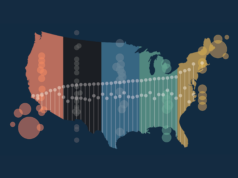
by Robert Calin-Jageman and Jeffrey Beall
Society benefits from the results of scientific research in many ways. Scholarly research supports expert testimony in courts of law, medical research is translated into improvements in clinical care, and the media report on new and interesting research and how it may impact our lives.
So, what’s at stake when a media outlet cites information from a journal published by a predatory publisher?
This was the case recently when the Chronicle of Higher Education wrote a glowing summary of a research paper published in Psychology Research, a scholarly journal published by the questionable publisher David Publishing.

David Publishing is a Chinese outfit that purports to operate out of Southern California. Its poorly-run website is extremely slow and difficult to navigate. Also, its journals lack credible editorial boards and publish articles of dubious quality — it’s a vanity press. As of this writing, there is no editorial board listed for the journal.
One of the ironies of predatory journals is that they sometimes contain articles that seem sound. This occurs because some serious researchers are fooled into thinking the publisher is a high-quality one, or they don’t evaluate its quality sufficiently.
So, should journalists cite material from predatory journals? Should they pick out the potentially good from a sea of obvious bad? Or should journalists refrain entirely from reporting on research from predatory journals?
Complete embargo seems to be a wise choice for several reasons. First, it doesn’t seem that predatory journals conduct meaningful peer review for any of their articles. Thus, all their articles could include errors of analysis or interpretation that would have been corrected by expert reviewers. Is that really such a big deal? Probably. After all, even high-quality open-access journals like PLos ONE reject about 30% of submissions. For the 70% that make it through it’s usually with substantial improvement through feedback and revision. Thus, even though some articles in a predatory journal can seem sound, it is probably best to consider their real quality an unknown. Given this, journalists would probably be better off avoiding predatory journals in favor of the abundance of true peer-reviewed research reported each week.

Another reason for the popular press to completely avoid predatory journals is to keep from adding fuel to the fire.
Secondary coverage can only add to the veneer of credibility that predatory journals seek to manufacture, enabling them to dupe even more hapless victims.
It’s surprising to see a respected source like the Chronicle being sloppy enough with sourcing to reporting on an article from a predatory journal. It’s a stroke of good luck for the journal, but their gain may be the Chronicle’s loss.
There is also the increasing problem of articles in high-quality journals citing research published in predatory journals, and we hope to study this more in the coming year.












